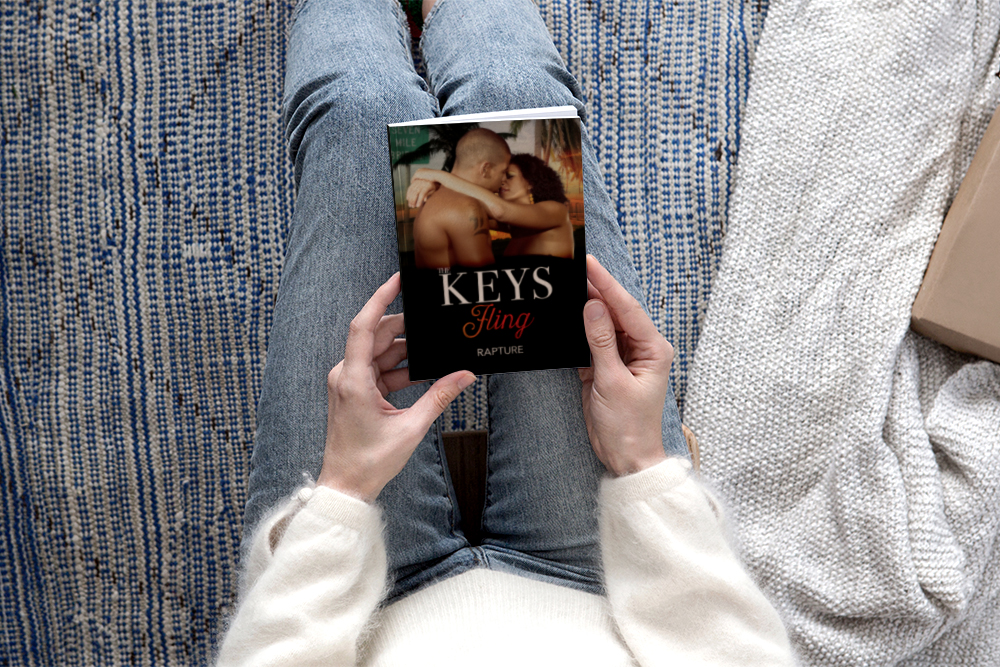
Romance Novel Cover (And Why Design Matters)
An author recently approached me to design a romance book cover. He had a very specific vision in mind for the cover and needed it to a) work within an existing series of books and match an existing style and typographic treatment, 2) reflect the diversity of the characters, 3) reflect the setting of the book, a critical component, 4) be photo realistic — no illustrations or digital art, and 4) gain the attention of romance fans looking for a compelling, erotic story — especially Black readers looking for representation.
Before approaching me, several designers had expressed an inability to meet the author’s clearly defined criteria. However, I jumped at the chance to meet this challenge head-on.
After clarifying the non-negotiables and determining how much flexibility the author would give me to meet his goals, I began work, completing concepts within a week. The author loved the finished product and had this to say about working with me:
“Stephanie designed my book cover, and it was EXACTLY what I asked for. 5/5 would use her services again and recommend her to a friend needing design services.”
I was so grateful for the opportunity to create something striking and professional that we could both be proud of. Additionally, I was grateful the author decided to invest in his own art, hiring a professional graphic designer rather than utilizing subpar AI.

The final design for my client’s romance book cover.
Why Authors Should Hire Graphic Designers for Book Covers Instead of Relying on AI Art
Your book cover is the handshake that introduces your story to the world. It’s the first impression, the visual hook that draws readers to pick your book off the shelf or click on it online. With the rise of AI-generated art, authors may be tempted to skip hiring a professional graphic designer. But here’s the thing: while AI tools can churn out a quick image, a professionally designed cover crafted by a skilled graphic designer offers benefits that no algorithm can replicate.
1. Your Cover Should Be More Than Pretty
AI art can create aesthetically pleasing visuals, but it often lacks the depth and intentionality that comes from human understanding. A graphic designer doesn’t just create “a cool image”; they craft a visual narrative that aligns with your book’s genre, themes, and tone. They understand market trends and what elements attract readers in specific categories, ensuring your book cover isn’t just attractive but also effective.
For example, the cover of a steamy romance novel will look vastly different from a dystopian thriller. A graphic designer knows how to use color palettes, typography, and composition to target the right audience. AI tools, on the other hand, might generate something visually appealing but contextually off, leaving potential readers confused or unimpressed.
2. Originality Matters
AI art often pulls from existing works to create new images. This can lead to ethical issues and unintentional copyright infringements, especially if parts of the art closely resemble existing creations. Hiring a graphic designer ensures originality. They start from scratch, working with your vision to develop a unique and legally sound design tailored to your book.
Originality also means standing out. The last thing you want is for your book cover to look generic or overly similar to someone else’s. A custom design makes your book memorable in a sea of competitors.
3. Collaboration Brings Your Vision to Life
A graphic designer is a partner in your creative process. They listen to your ideas, ask questions, and refine their designs based on your feedback. This collaboration ensures the final product aligns with your vision while also benefiting from the designer’s expertise.
AI tools, however, are one-sided. They generate images based on prompts, and while you can tweak the inputs, they lack the ability to truly understand and adapt to nuanced feedback. The human connection is lost, leaving you with a product that might not fully resonate with your story.
4. Design Is About More Than Art
A book cover isn’t just about the image; it’s about how all the elements—typography, layout, hierarchy, and branding—work together. A graphic designer considers how the title, subtitle, and author name integrate into the design, ensuring readability and balance.
AI tools may generate a compelling visual, but they often falter when it comes to integrating text in a way that’s professional and polished. Poor typography or awkward placement can undermine even the most stunning artwork.
5. A Designer Adds Value Beyond the Cover
Hiring a graphic designer often comes with added perks. They can create complementary assets for your marketing efforts, such as social media graphics, bookmarks, or promotional posters, ensuring your branding is cohesive. They may also advise on printing specifications, helping you avoid costly mistakes.
AI art tools won’t provide this level of comprehensive support. Their utility ends with generating the image, leaving you to figure out the rest on your own.
6. Your Book Deserves It
As an author, you’ve poured your heart and soul into writing your book. It’s a product of countless hours of hard work and creativity. Doesn’t it deserve a cover that reflects that same level of care and effort? A professionally designed cover signals to readers that your book is a quality product worth their time.
Final Thoughts
While AI art may seem like a cost-effective and quick solution, it’s no substitute for the expertise, creativity, and intentionality of a graphic designer. Your book cover is an investment in your success as an author, and hiring a professional ensures you’re putting your best foot forward in a competitive market.
By choosing a graphic designer, you’re not just getting a cover; you’re gaining a partner in bringing your story to life and giving it the presentation it truly deserves.
So, when it’s time to design your next book cover, skip the shortcuts. Hire a graphic designer. Your book—and your readers—will thank you.
